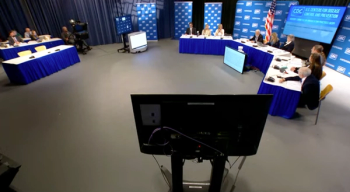
Save Medicare by allowing patients to choose
An American solution focusing on individuality and conserving resources can save the Medicare program.
Editor's Note: Welcome to Medical Economics' blog section which features contributions from members of the medical community. These blogs are an opportunity for bloggers to engage with readers about a topic that is top of mind, whether it is practice management, experiences with patients, the industry, medicine in general, or healthcare reform. The opinions expressed here are that of the authors and not UBM / Medical Economics.
Throughout the first half of the 20thcentury there was debate about the government’s role in providing healthcare. Some wanted means testing to help the poor obtain insurance. Others focused on the elderly, who were no longer receiving employer-sponsored insurance. These questions were settled, as is often the case, after an emotionally jolting event: the assassination of President John F. Kennedy. Kennedy had championed the cause of providing the elderly with a government delivered health benefit. He was thwarted by two entities: the American Medical Association (AMA) and Wilber Mills (D-AR), the powerful Chairman of the House Ways & Means Committee. The AMA was against any government sponsorship of care, but did not propose an individualistic alternative. Mills was concerned that an open-ended federal health benefit would eventually overwhelm the budget. He also foresaw that a benefit plan causing an increase in demand without an increase in supply would result in soaring prices. However, after the assassination of the President and the 1964 Democratic landslide, Mills knew the equally crafty President Johnson had the votes. So Mills, borrowing from ideas percolating in Washington, created and shepherded through Congress Medicare/Medicaid as amendments to the Social Security Act.
Medicare, enacted in 1965 as a federal benefit, was designed to serve those 65-years and older. Subsequently, those with permanent disabilities, end-stage renal disease and Lou Gehrig’s disease have been added. Since Medicare’s inception Congress has struggled to keep the program solvent. It has to deal with an ever-growing bureaucracy, a changing demographic (aging of the population), ever expanding and costly medical advances, longer life spans and recipients receiving care at a cost two- to three-times their contributions. Congress is well aware of the increasing tax burden on each succeeding generation.
Part A benefits-in-patient hospital, skilled nursing facility, home health and hospice care-is funded by a tax on earned income. Initially it was 0.70 percent, one half deducted from the employees’ wages, the other half paid by the employer, with those self-employed paying the total. Having the employer pay half is deceptive, since it is monies the employee does not receive as salary. The initial 0.70 percent has increased to 2.9 percent.
Another deception is the recent decrease in Medicare payments to hospitals. This was touted as protecting the fund. In reality, workers are footing the bill, because as hospitals lose money on Medicare patients they negotiate higher reimbursements from private insurance, known as cost shifting. This increases employers’ private insurance premiums, which are monies NOT paid to the employee as salary. The HITECH Act of 2009 forces hospitals to spend millions of dollars, and in some cases billions, on government “certified” electronic medical records in order to be paid by Medicare/Medicaid. This is further compromising hospital budgets causing even more drastic cost shifting. To further support the program those married filing jointly with earned income of $250,000 or more, pay an additional 0.9 percent payroll tax and 3.8 percent tax on unearned income.
Despite these efforts, the hospital fund is projected to start having a shortfall in 2026 if no changes are made. One outcome is hospital reimbursements will decrease even further.
Funding for parts B and D, covering physician, out-patient facilities, home healthcare, prescription drugs, and services for the aged and disabled, is from general tax revenues (about 75 percent) and premiums paid by the recipients (about 25 percent). Funding is adjusted yearly, thus there cannot be shortfall, but tax monies will need to be increased, putting a further burden on the succeeding generation.
Medicare spending was $425 billion in 2007, $702 billion in 2017 and projected to be $1.26 trillion in 2026, according to the Kaiser Family Foundation.
In its never ending but failed attempts to control these costs, Congress has initiated a series of price-fixing, central planning, bureaucratic, and time-consuming initiatives, such as efforts to push value-based care in MACRA’s Quality Payment Program. These efforts destroy the patient-physician relationship and overburden physicians with a heavy administrative workload. This has contributed to physician burnout. Because of its size, Medicare policies dominate the industry.
There is a uniquely American solution: Let each individual choose between two options: A benefit option or a payment option. In the benefit option, patients can choose to stay in the present program. In the payment options, patients can elect to receive a yearly deposit into a health account that would pay for routine/direct care. Alongside this, patients would have access to nationally available catastrophic insurance, with the patient paying 1 percent of these expensive costs. Patients would also need federally funded re-insurance for huge expenses. This option would have the effect of promoting market discipline, patient awareness of cost, price transparency, increased efficiency and lessened bureaucracy, which would lead to better care and decreased costs.
Addressing the serious issue of the ever-increasing cost of Medicare on future generations requires the growth of funds accrued during patients’ working years. This could be accomplished with those who desire having their payroll deductions deposited into a separate individually owned health fund, with half invested into a federally insured mutual fund and the other half in U.S. Treasury bonds. This program would need to be phased in over several years to maintain the viability of the present program.
This option would ensure that seniors continue to have access to its world’s best results, especially for those with serious disease. This is an American solution focusing on individuality and conserving resources and it can save the Medicare program.
Kenneth A. Fisher, MD, is an internist/nephrologist, teacher, author ("Understanding Healthcare: A Historical Perspective" and "In Defiance of Death: Exposing the Real Costs of End-of-Life Care"), and co-founder of Michigan Chapter of the Free Market Medicine Association.
Newsletter
Stay informed and empowered with Medical Economics enewsletter, delivering expert insights, financial strategies, practice management tips and technology trends — tailored for today’s physicians.















